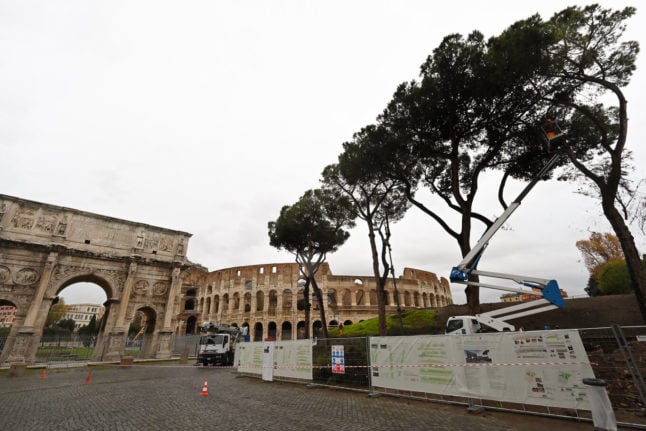“If we do nothing, the pines of Rome will be destroyed by the thousands,” warned agronomist Franco Milito, who estimates there are around 60,000 such trees in the city's public areas and another 30,000 on private land.
“And they are really the trees of Rome, which shape the views. We must look after them.”
The insects, originally from North America, can kill trees already weakened by the urban environment within just two or three years, experts told AFP.
“It's very serious,” said Patrizio Zucca, head of the association of agronomists in Rome. “Urgent action is needed.”
Little vampire
Toumeyella parvicornis, to give it its Latin name, is about three millimetres long, and its reddish-brown oval shell resembles a tortoise.
It was unknown in Italy until five years ago, but after ravaging the stone pines of Naples in the south, it has moved up the coast.
The insect operates like a little vampire, sucking with its syringe-like mouth the sap from both the tree's needles and its bark.
It produces a sweet white excrement, on which thick black mould develops, covering the tree and blocking the process of photosynthesis.
Massacre in Naples
In Campania, the southern region that includes Naples, although many pines succumbed, others resisted.
“The scales act like agents of natural selection,” said Antonio Pietro Garonna, professor of entomology at Naples Federico II university.
He suspects that high temperatures, over 35 degrees Celsius (95 degrees Fahrenheit), can cause them to disperse.
“If, with climate change, temperatures rise in the summer, the scales will suffer a lot,” he said.
But until then, “it's a massacre”, laments Vincenzo Topa, an agronomist living in Posillipo, a coastal district of Naples.
The area once boasted a glorious park of 1,200 pines, opened in 1931 by the Fascist leader Benito Mussolini.
He also planted pines across Rome, making them so much a symbol of Italy that they became known not by their Latin name “pinus pinea” but as “pino italico”.
But “out of around 10,000 pines in Naples, at least half are dead”, Topa said.
No obvious solution
Authorities in Lazio, the region that includes Rome, are urgently seeking a solution.
One option is to inject chemicals into the trunk of each tree, but it is expensive and was effective only 20 to 30 percent of the time in Campania, according to Amadio Lancia, the local official responsible for the issue in Lazio.
And many products cannot be sprayed directly on trees in urban areas for public health reasons, he added. “The only solution will be to use natural predators, but a study will take time.”
A predatory scale was introduced a century ago in Campania to protect against those attacking citrus fruits but “their numbers are still insufficient”, Garonna said.
In its native territory of North America, the pine tortoise scale lives less aggressively alongside the pines, although it does attack Christmas trees.
“In Europe, our pines have never seen this insect and have no defence mechanism. It's a free-for-all for the scales,” Garonna said.
The insect has also made its way to the Caribbean, notably the Turks and Caicos islands, where 90 percent of the pines have been destroyed.
But Lazio official Lancia is trying to stay positive.
“The situation is not irreversible in Rome,” he insisted. The scales' advance in Campania “has stopped naturally in certain areas”.
So far, the tiny invaders have also failed to travel to Calabria in the south, or the hills of Tuscany to the north. But for how long?



 Please whitelist us to continue reading.
Please whitelist us to continue reading.
Member comments